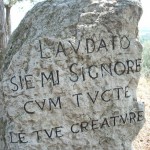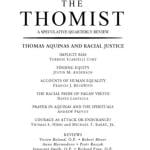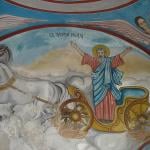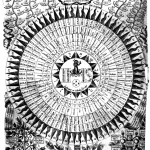Remember that you are dust, and to dust you shall return.
It’s Ash Wednesday, and time–thank God!–to be reminded that we will die. That reminder, slashed on foreheads in the oily black ash so reminiscent of human cremains, is a gift, not a curse. It’s not morbid, but vivifying.
We Americans don’t think nearly enough about death and its inevitability and the consequences of that great speed limit. I’m Irish, so I think about it more than most people, particularly while in my cups, but even I give it (to use a term traditionally associated with this Shrovetide) short shrift. In fact, we spend a huge amount of time and money trying to convince ourselves that death and its warmup act, aging, don’t exist. Believe me, I know. One of the odd ways I keep body and soul together is by writing marketing copy touting cosmetic dermatology treatments like Botox and laser rejuvenation. As more and more Americans join us boomers in the Refusal to Age Gracefully or At All Club, I fully expect some “independent” government panel to redefine aging as a preventable disease against which employee health plans must supply free injectable fillers and eyelifts.
So today, in addition to flaunting my blackened forehead, I’m filling this space with reminders of death’s inevitability, like strings tied around a skeletal finger. It’s a very old tradition in art and literature, the memento mori, but one “more honored in the breach than the observance” these days. Here are some of my favorite bits, submitted for your consideration.
Ashes, ashes
We all fall down
~ “Ring around the rosy”
This children’s circle game had its origins in the Black Death, Europe’s danse macabre with bubonic plague. The ashes on our foreheads today remind us, and all who see us, that we do indeed all fall down. The still life painting genre known as the vanitas (or, in the more visceral French, nature mort, “dead nature”) contrasts the vibrant life of flowers and fruit and the glitter of earthly treasures with signs of rot and decay, including the skull. Today, as spring brings the first signs of life to the grayness of late winter–“breeding lilacs out of dead ground,” as T S Eliot put it–we are asked to look unflinchingly into the empty eye sockets of Time.
The Sceptre, Learning, Physick must
All follow this and come to dust.
~ William Shakespeare, Song: Fear no more the heat o’ the sun, from Cymbeline
Death spares no one–not the most powerful, not the wisest among us, not the healthiest and fittest. Hans Holbein’s astonishing memento mori, The Ambassadors, could be an illustration of Shakespeare’s song from Cymbeline. Lavishly gowned representatives of the State and the Church stand surrounded by the objects of human government, knowledge, and medicine. At their feet, rendered in anamorphic perspective so that unless you are glancing sideways it appears simply as an ashy gray blur, is an enormous skull. Look! today cries out. Even if you can only spare a quick, fleeting, sidelong flicker, look! To this dust will you come. Poussin’s shepherds, resident in the edenic pastoral landscape of Arcadia, are looking, and what they see is a tomb. Et in Arcadia ego, the inscription reads. Even in Arcadia, I, Death, am here.
Don’t hang on
Nothing lasts forever but the earth and sky
It drifts away
And all your money won’t another minute buy
Dust in the wind
All we are is dust in the wind . . .
~ Kansas, “Dust in the Wind”
Once we’ve looked, what do we do? Repent, and believe in the gospel, as the revised liturgy for the imposition of ashes directs us. We begin by beginning to let go, not giving up but giving in to the reality that we really, really can’t take anything with us. The Lenten process–the life process–of stripping away all non-essentials, spring cleaning the soul, thinking again (the literal meaning of repent) about what matters most is embodied in paintings of the Penitent Magdalene. The tradition that inspired artists like Georges de la Tour and Guido Reni, that Mary Magdalene was a wealthy prostitute who repented of her worldly excesses after encountering Jesus, is based on an incorrect reading of Scripture. But there is powerful symbolism here for today. The soul who has looked on death casts away her jewels and turns inward to the flame of faith, or flees to the wilderness (in the Magdalene legend, a French cave) to meditate in nakedness, sustained by the Bread of Angels. We let go of the temporal to focus on the eternal. As Cosmo says in Moonstruck (a film that makes a perfect Ash Wednesday sermon, as Elizabeth Scalia points out) when told that Loretta’s cheap engagement ring is only temporary, “Everything is temporary. That don’t excuse nothing.”
Although I do not hope to turn again
Although I do not hope
Although I do not hope to turn
. . .
Blessed sister, holy mother, spirit of the fountain, spirit of the garden
Suffer us not to mock ourselves with falsehood
Teach us to care and not to care
Teach us to sit still
Even amid these rocks
Our peace in His will
And even among these rocks
Sister, mother
And spirit of the river, spirit of the sea
Suffer me not to be separated
And let my cry come unto Thee.
~ T S Eliot, “Ash-Wednesday”
Looking at death coming down the track, we make (if we are graced enough and brave enough) the U-turn that is conversion. We run toward Real Life, not artificial rejuvenation. Eliot’s “Ash-Wednesday” is his own very personal reflection on his late-life conversion to Christianity from agnosticism, a movement that caused his friends to accuse him of drinking the Kool-Aid. I love this poem in my own Kool-Aid-drinking reversion, because Eliot expresses so well how we hardly dare hope that we will be capable of the turning again that is sincere conversion. The secret, he says, is not in doing things, but in learning to be still and acknowledge God’s presence and absolute sovereignty over life and death. We are helped in that, during Lent and always, by our “blessed sister, holy mother” who is at one and the same time Dante’s Beatrice (the grace of God’s love personified), our Mother Mary, and Francis of Assisi’s shining Sister Death. And in the end the lesson of today is, oddly enough, Islam (submission). Francis, in his Canticle of the Creatures, says “Blessed are those Death finds doing your will,” and Eliot quotes Dante’s motto, E’n la sua volontade e nostra pace–“In his will is our peace.”
So teach us to number our days, that we may apply our hearts unto wisdom.
~ Psalm 90:12 (KJV)
The chance to look death in the face, to befriend this sister, is a great gift. Today, as we are marked with the dust we are, let us take the opportunity granted us to apply our hearts unto wisdom. Teach us, Lord, to number our days . . . at least for the next 40 of them, or as many of those as you allow us.











